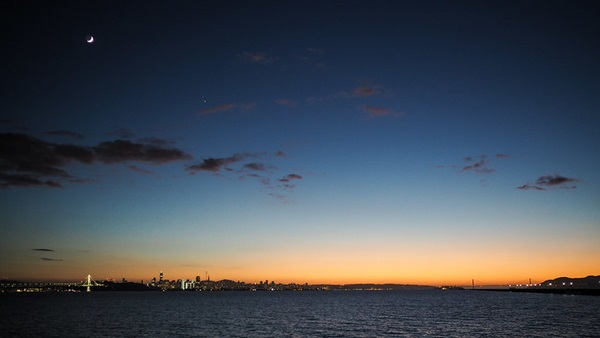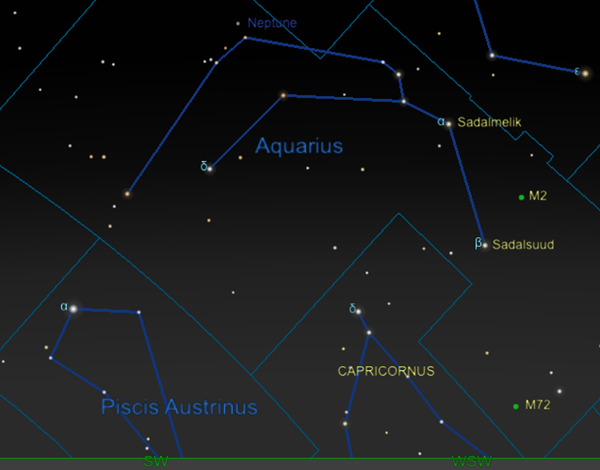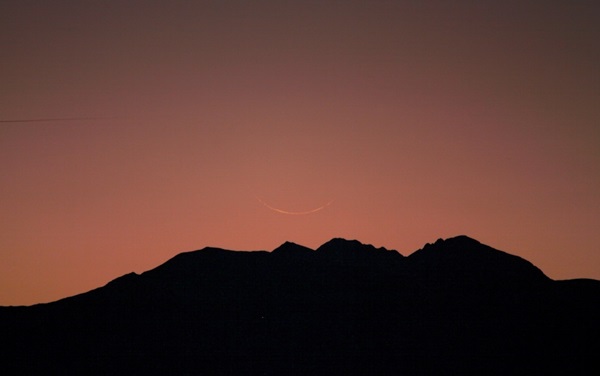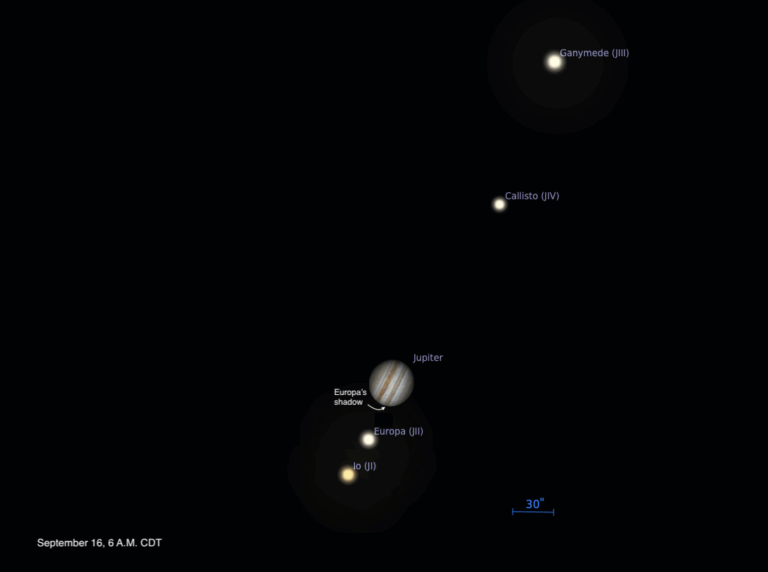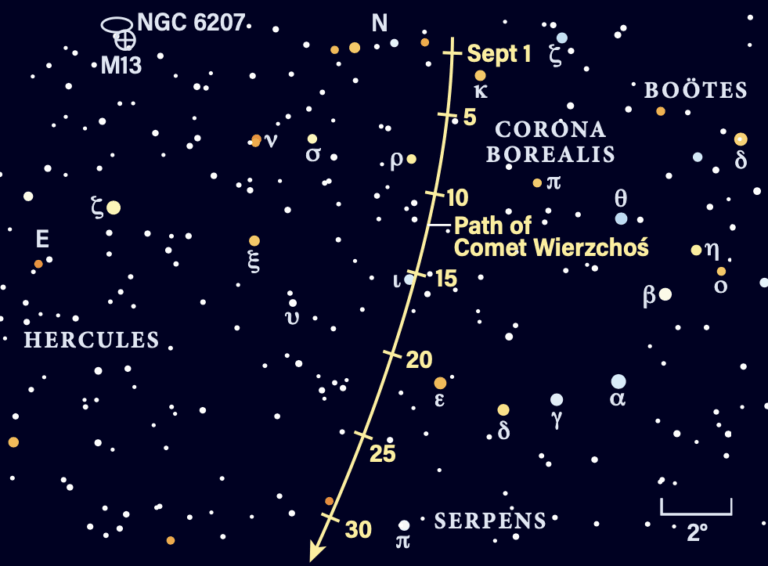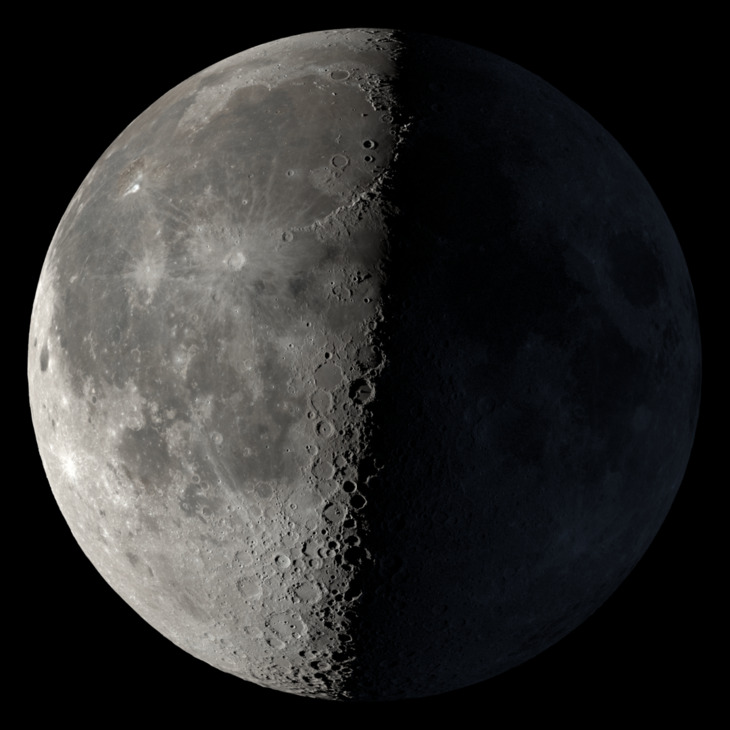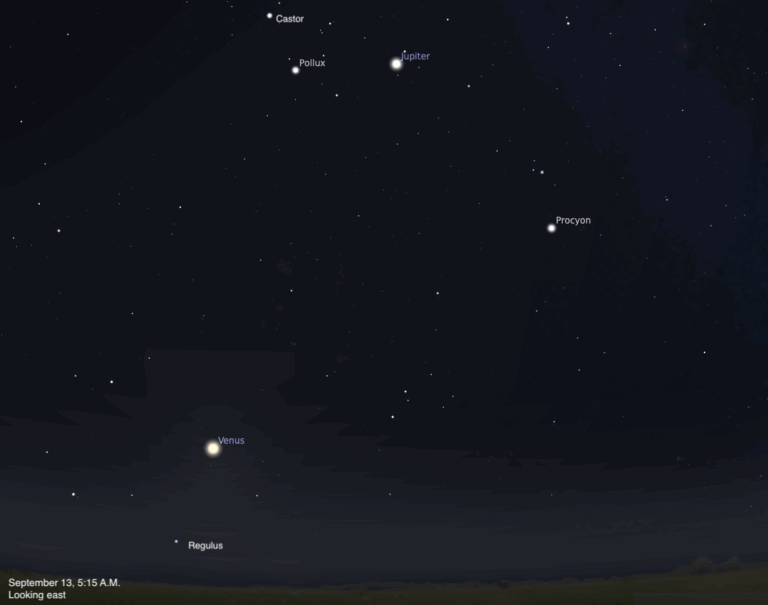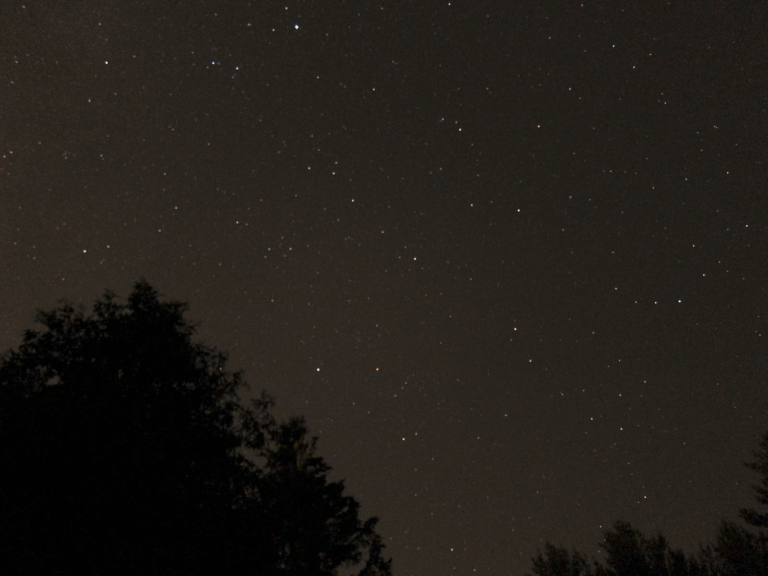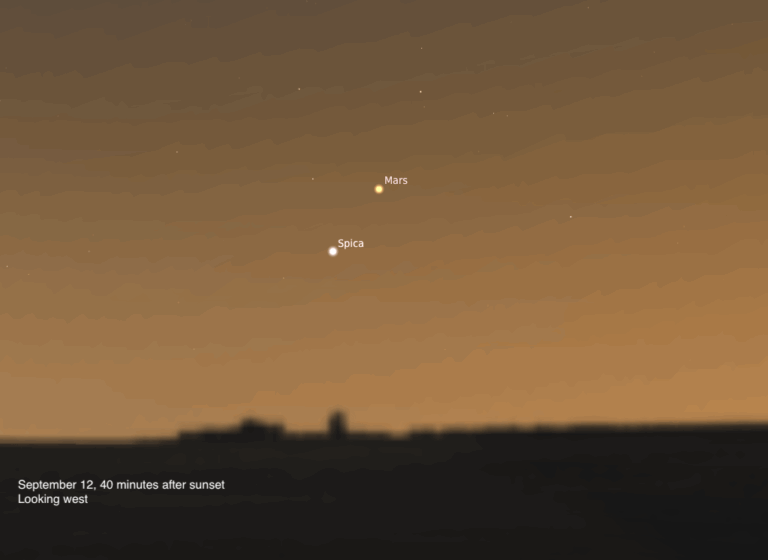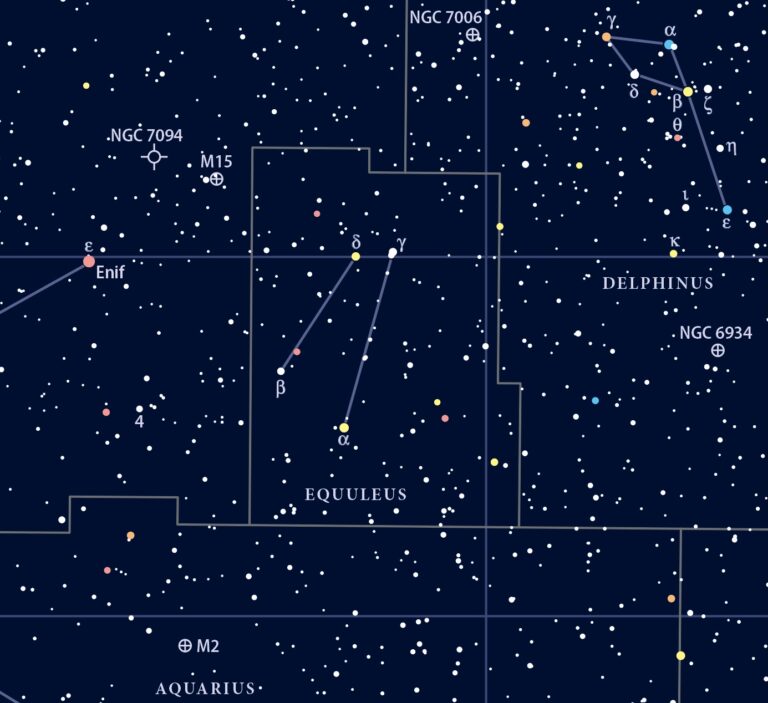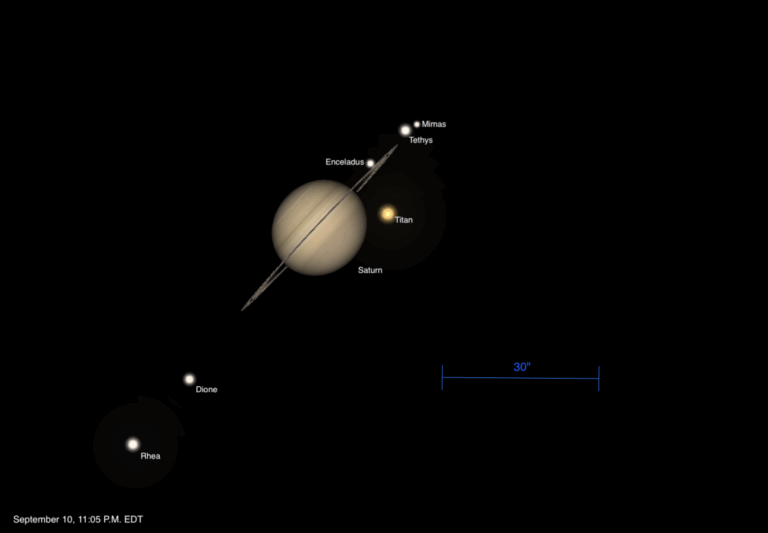Key Takeaways:
Although the universe is vast, galaxies often meet and interact. Such is the case with Bode’s Galaxy (M81) and the Cigar Galaxy (M82), two nearby spirals located about 10° northwest of Dubhe, Ursa Major’s magnitude 1.8 alpha star. The pair is visible in a small scope, whose low power can capture both in a single field of view — they sit roughly 35′ apart. Higher power (or larger apertures) will reveal more detail in each, particularly in M81, whose spiral arms become visible under dark skies and greater magnification. The Cigar Galaxy, which gains its name from its long, skinny appearance, is tilted sideways with respect to Earth, meaning its dusty disk is visible edge-on, hiding its spiral arms.
After dark, Ursa Major is already climbing higher in the northern sky, with the Big Dipper oriented so the end of its handle touches the horizon. The Great Bear will continue her upward climb as the night progresses, eventually turning onto her back into the early morning as the stars near the North Pole rotate around it.
Sunrise*: 7:22 A.M.
Sunset: 4:52 P.M.
Moonrise: 2:22 A.M.
Moonset: 1:06 P.M.
Moon Phase: Waning crescent (24%)
*Times for sunrise, sunset, moonrise, and moonset are given in local time from 40° N 90° W. The Moon’s illumination is given at 12 P.M. local time from the same location.
The Moon reaches perigee, the closest point in its orbit to Earth, at 10:37 A.M. EST. It will then sit 228,284 miles (367,387 kilometers) from our planet.
Immediately after sunset, a stunning sight will greet you in the southwestern sky: Mercury, Jupiter, and Saturn all sit within a 2.3°-wide circle. Mercury, closest to the horizon, shines at magnitude –0.9 and is 1.9° due south of Jupiter (magnitude –2). Saturn sits just to the right of a line drawn between them, glowing a dimmer magnitude 0.6. The sight can be enjoyed with the naked eye, or with binoculars or a telescope.
Get out early to observe them, however — an hour after sunset, only Jupiter remains, and it’s a scant 1.5° above the horizon. The trio remain close all week and change position quickly, making a great sunset target for the next several days.
Sunrise: 7:22 A.M.
Sunset: 4:53 P.M.
Moonrise: 3:37 A.M.
Moonset: 1:44 P.M.
Moon Phase: Waning crescent (15%)
The distant planet Neptune is an ideal early evening object this month. You’ll find its magnitude 8 glow amid the stars of Aquarius — in fact, the gas giant is located less than 1.5° northeast of Phi (φ) Aquarii, a magnitude 4 star. Can you see the difference between the star and the planet’s subtle blueish glow?
While you’re in the area, Aquarius is home to two globular clusters: M2 and M72. Magnitude 6.2 M2 is in the northwestern region of the constellation, floating about 8° west of magnitude 3 Sadalmelik (Alpha [α] Aquarii). To its south is M72, a much dimmer magnitude 9 globular that you can find by drawing a line between Sadalmelik and Sadalsuud (Beta [β] Aquarii), then following it in the same direction for roughly the same distance to reach the cluster. Because it’s a bit fainter, you’ll need a larger telescope to resolve M72 from a fuzzy patch of brightness into stars. If you have only low power available to you, focus in on the brighter M2 instead. Additionally, M72 will set long before M2 or Neptune, so seek it out as soon as darkness falls. You’ll have another hour or two after that to catch the other targets, higher up in the constellation.
Sunrise: 7:22 A.M.
Sunset: 4:54 P.M.
Moonrise: 4:50 A.M.
Moonset: 2:29 P.M.
Moon Phase: Waning crescent (8%)
Monday, January 11
Mercury passes 1.5° south of Jupiter at 6 A.M. EST. The pair is well below the horizon, invisible to observers.
Step outside early this morning before sunrise to spot the Moon and Venus sharing the sky in Sagittarius. Our Moon is a delicate crescent just over 3 percent lit, while Venus, less than 4° to its east, is 95 percent lit when viewed through a telescope. The planet is a bright magnitude –4, making it an easy-to-spot morning star.
Look about 23° west of Venus and you’ll find not Mars, but its doppelgänger: Antares, the red heart of Scorpius the Scorpion. This star earned its name because its brightness and color so closely match those of the Red Planet. But Mars is visible in the evenings this month; we’ll visit it later this week.
The Moon passes 1.5° south of Venus at 3 P.M. EST. By tomorrow it will sit east of the planet, and Venus will rise well before our satellite appears in the sky.
Sunrise: 7:21 A.M.
Sunset: 4:55 P.M.
Moonrise: 6:01 A.M.
Moonset: 3:23 P.M.
Moon Phase: Waning crescent (3%)
Tuesday, January 12
Today marks the end of the Quadrantid meteor shower, which peaked January 3. However, ambitious observers with dark skies may still be able to catch the shower’s last few stragglers. The Quadrantids’ radiant, located in the constellation Boötes, is high in the morning sky just an hour or two before sunrise. At its peak, the shower produced more than 100 meteors per hour, so some additional meteors above the random background level of seven or so per hour are still likely.
While you’re up this morning, look again for Venus, now preceding the Moon in the sky. In fact, our young satellite rises shortly before the Sun, by which time Venus is already 10° high. See how long you can follow it in the morning twilight, but avoid using optical aid of any kind after the Sun has risen to prevent accidentally damaging your vision.
Sunrise: 7:21 A.M.
Sunset: 4:56 P.M.
Moonrise: 7:05 A.M.
Moonset: 4:24 P.M.
Moon Phase: Waning crescent (0.3%)
New Moon occurs at 12:00 A.M. EST. Our satellite less than a day old by sunset, but if you have a clear view of the southwestern horizon, it’s worth trying to see it. (Keep in mind, however, that this is a very difficult observation, and unlikely to bear fruit unless conditions are perfect.)
By sunset, our Moon is a less-than-1-percent-lit crescent. Search for it 20 to 25 minutes after sunset, when it will be just 1° above the horizon. Mercury, Jupiter, and Saturn are nearby — Mercury is just 6.5° northeast of our satellite, and the innermost planet is now located to the upper right of Jupiter, nearly 3.5° to Mercury’s lower right. Saturn is another 2.5° west of Jupiter, to the gas giant’s lower right. The three form a roughly straight line. Mercury will continue to pull away from the larger planets over the next several days, as the slowly waxing Moon does the same.
The Moon passes 3° south of Jupiter at 8 P.M. EST, when both have sunk well below the horizon.
Sunrise: 7:21 A.M.
Sunset: 4:57 P.M.
Moonrise: 7:59 A.M.
Moonset: 5:31 P.M.
Moon Phase: Waxing crescent (0.5%)
Thursday, January 14
The Moon passes 2° south of Mercury at 3 A.M. EST; both are below the horizon at that time. Pluto is in conjunction with the Sun at 9 A.M. EST.
Also at 9 A.M. EST, Uranus is stationary against the background stars. The penultimate planet in our solar system is located in Aries the Ram, visible after sunset. You can easily pick out its magnitude 5.8 glow with binoculars or a small scope. Its 4″-wide disk will likely appear as a “flat” gray star.
Just 3.3° west of the ice giant is a much brighter planet: Mars, also making its way through Aries, shines at magnitude 0.1. Now 9″ across, Mars is moving away from Earth along its orbit outside our own. Over the course of January, it will remain in Aries but shrink another 1″ and dim a few tenths of a magnitude. Nonetheless, it remains an excellent evening object this month, readily visible in small and large scopes alike.
If you return to this region of the sky night after night, you’ll see the Red Planet move noticeably northeast each night, passing 1.7° north of Uranus on the 21st. After tonight, Uranus will also begin inching northeast — but because it is much more distant, it appears to move much more slowly across the sky. The ice giant will remain within 4′ of its current position all month, even as Mars flies quickly past.
Sunrise: 7:20 A.M.
Sunset: 4:59 P.M.
Moonrise: 8:44 A.M.
Moonset: 6:38 P.M.
Moon Phase: Waxing crescent (3%)
Friday, January 15
The strangely metallic asteroid 16 Psyche is located near Aldebaran, the red giant eye of Taurus the Bull, all month. It’s already well above the horizon at sunset. As soon as darkness falls, pull out your telescope and look 1.5° north of the bright star to find Psyche. Depending on your location, a 4-inch scope may be enough to spot it in a dark sky. Those in the suburbs might want a 6-incher or larger.
To positively identify the asteroid, you’ll want to return to this region again and again, noting which point of light has moved. Psyche travels about 6′ per day (24 hours), so coming back day after day will show the most motion. The asteroid is currently moving northwest against the background stars. Around the 23rd, it will reverse course, starting to make its way northeast instead.
If you’re observing without a telescope, there’s still plenty to enjoy in the sky tonight. Once you’ve located Aldebaran, just slide your gaze about 14° northwest to spot the sparkling Pleiades star cluster. How many of its brightest stars can you count by eye, and can you make out its tiny “little dipper” shape? (Despite its shape, the Pleiades are not the Little Dipper. You’ll find that in the north, stretching outward from our pole star, Polaris.)
Sunrise: 7:20 A.M.
Sunset: 5:00 P.M.
Moonrise: 9:21 A.M.
Moonset: 7:46 P.M.
Moon Phase: Waxing crescent (8%)

